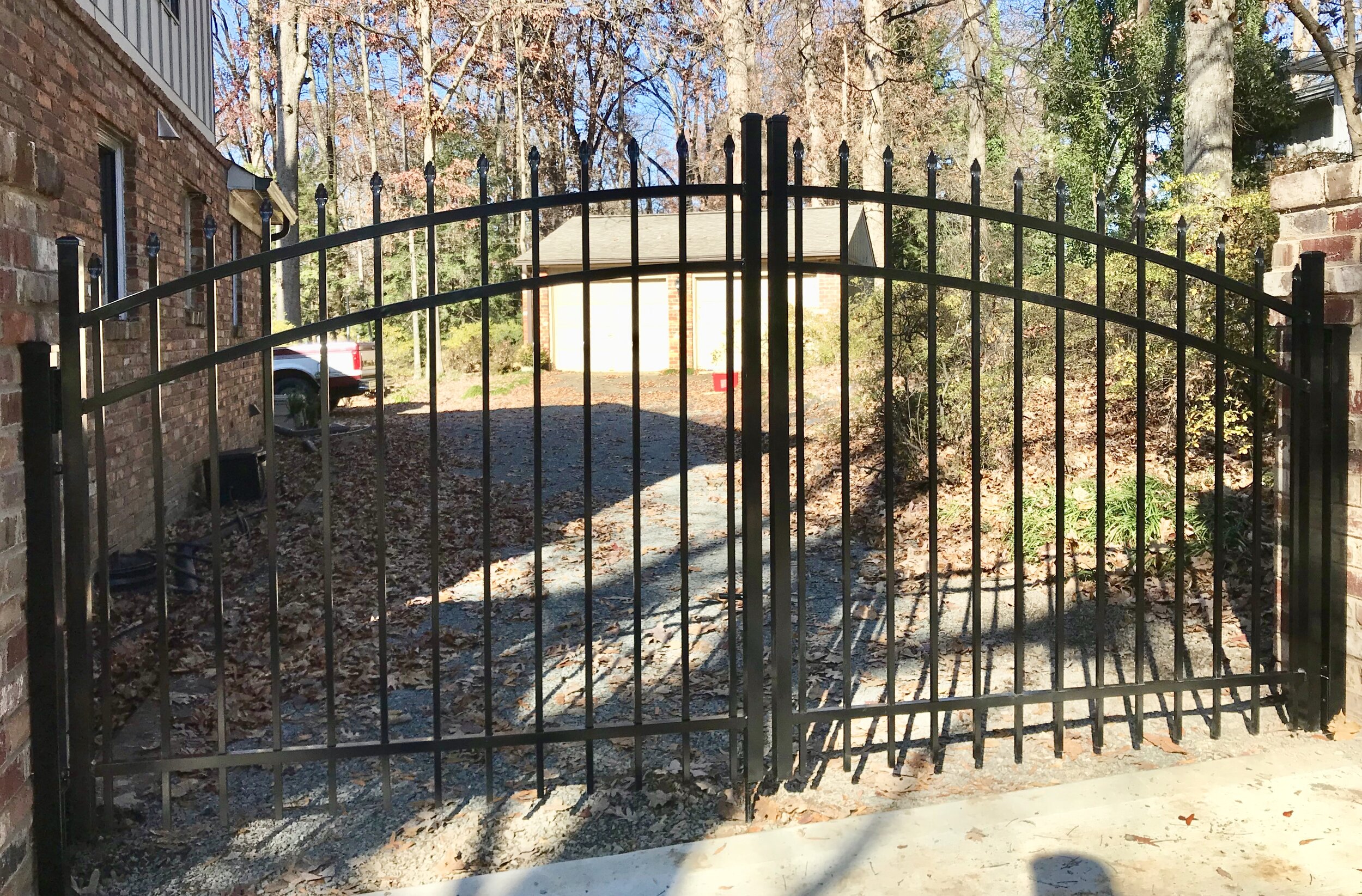The Historical Elegance of Iron Gates: A Closer Look at Their Architectural Roots
From grand entrances of historic estates to charming garden gates, ironwork has been shaping architecture for centuries. More than just a decorative touch, iron gates have stood as symbols of strength, status, and craftsmanship. Their intricate scrolls, bold bars, and timeless appeal tell a story of artistry and innovation that has evolved across different cultures and eras.
Dating back to medieval times, iron gates were designed for protection, guarding castles and cities with their sturdy, forged designs. Over time, they became a showcase of craftsmanship, blending security with elegance in everything from Gothic cathedrals to Victorian mansions. Even today, their presence in modern architecture adds a touch of history and sophistication to homes, parks, and public spaces.
What makes these gates so enduring? And how have their designs changed over the centuries while still maintaining their timeless charm? Let’s take a closer look at the architectural roots of iron gates and the rich history they carry with them.
How did iron gates become a symbol of elegance in architecture?
Iron gates symbolized elegance in architecture due to their strength, craftsmanship, and decorative potential. Here's how they earned their status:
Durability and Strength: Iron is a highly durable material, making it ideal for creating gates that serve as protective barriers and withstand the test of time. The sturdy nature of iron made gates both functional and reliable, offering security to grand estates, castles, and estates.
Craftsmanship and Artistic Detail: Wrought iron allowed skilled metalworkers to incorporate intricate designs and fine details into gates. Decorative elements like scrolls, floral motifs, and elaborate patterns added an artistic dimension, transforming gates into works of art that elevated the property's aesthetic appeal.
Symbol of Wealth and Status: Only the wealthiest and most influential individuals could afford custom-designed iron gates during the Renaissance and later periods. As a result, these gates became symbols of status and exclusivity, signifying the importance and grandeur of the estates they adorned.
Cultural Significance: Iron gates have become associated with refinement and sophistication in various cultures over time. Whether used for palaces, churches, or gardens, they convey a sense of elegance and high society.
Longevity and Timeless Design: Iron gates' longevity, combined with their timeless designs, ensured they remained a lasting symbol of architectural elegance, continuing to enhance the appearance of properties even in modern times.
Iron gates became a mark of sophistication through their durability, fine craftsmanship, and association with wealth, making them a cherished architectural feature.
What role did iron gates play in the design of historical buildings?
Iron gates played a significant role in the design of historical buildings, serving both functional and aesthetic purposes. Here's how they contributed to the architecture of the past:
Security and Protection: Iron gates were historically used to secure important buildings, including castles, estates, and churches. The strong material protected against intruders, allowing for both privacy and safety. The gates often marked the boundary between private and public spaces.
Symbol of Wealth and Power: Iron gates were often designed to reflect the wealth and status of the building's owner. Elaborate gates with intricate wrought ironwork were often used in the entrances of palaces, government buildings, and mansions. The gates became a visual representation of power and prestige.
Enhancement of Architectural Aesthetic: Iron gates were often integrated into the overall design of historic buildings, adding beauty and craftsmanship. Decorative elements, such as scrollwork, floral patterns, and geometric designs, made the gates a striking property feature, enhancing its architectural elegance.
Separation of Spaces: Gates were used to divide areas, creating a sense of hierarchy in building design. For example, gardens, courtyards, and private areas were often enclosed with iron gates, contributing to the organization and flow of the space.
Longevity and Durability: Iron's durability ensured that gates could withstand the elements and last for centuries, making them a lasting architectural element in many historic buildings.
Iron gates served as functional barriers and striking architectural features that contributed to the identity and grandeur of historical buildings.
What architectural styles commonly featured iron gates throughout history?
Iron gates have been featured prominently in various architectural styles throughout history, each bringing its unique design approach to wrought iron. Here are the architectural styles that commonly incorporated iron gates:
Baroque: The Baroque period, known for its grandeur and ornate detailing, often featured highly decorative iron gates. These gates incorporated intricate scrollwork, elaborate patterns, and flourishes, reflecting the drama and opulence of the time.
Neoclassical: Neoclassical architecture, emphasizing symmetry and classical motifs, often used iron gates with clean, geometric designs. These gates were less ornate but featured strong, elegant lines that complemented the proportionate, stately buildings.
Victorian: The Victorian era embraced ornate and intricate iron gate designs, frequently incorporating floral motifs, curving lines, and decorative elements. These gates were often used in gardens and estate entrances, reflecting the Victorian love for detailed craftsmanship and luxury.
Gothic Revival: In the Gothic Revival style, iron gates often featured pointed arches and spires, echoing the features of medieval architecture. These gates added a dramatic, almost medieval flair to churches and cathedrals.
Art Nouveau: The Art Nouveau style, known for its flowing, organic forms, embraced wrought iron gates that featured sweeping curves and natural motifs, such as flowers and leaves. These gates were designed to blend harmoniously with the surrounding landscape and architecture.
Arts and Crafts: Iron gates were simpler and focused on handcrafted quality in the Arts and Crafts movement. While still decorative, they featured straightforward designs that emphasized function alongside artistic beauty.
Each architectural style adapted iron gates to fit its visual language, using them as functional elements and artistic statements in the overall design of buildings and landscapes.
How were iron gates manufactured and designed in the past compared to today?
Iron gates in the past were crafted through traditional, labor-intensive methods, while modern techniques allow for faster, more efficient production. Here's how the process differed:
Historical Manufacturing:
Hand Forging: Blacksmiths used manual tools to heat and shape iron, a labor-intensive process that involved hand-hammering and bending the metal into intricate designs.
Wrought Iron: Wrought iron, a malleable form of iron, was commonly used. It could be heated and shaped with ease, and it was often used to create elaborate scrollwork and patterns.
Custom Designs: Each iron gate was custom-designed by skilled artisans, making every piece unique with intricate details and craftsmanship. It often took weeks or months to complete.
Modern Manufacturing:
Iron Production: Today, iron gates are often manufactured using automated machinery, which speeds up the process and allows for the mass production of gates with consistent quality.
Mild Steel: Mild steel is now commonly used, as it is easier to work with and more cost-effective than traditional wrought iron while still maintaining strength.
Advanced Welding and Techniques: Modern methods such as welding and laser cutting allow for more precise and complex designs in less time.
While historical iron gates were crafted by hand with unique artistry, modern techniques have streamlined production, making gates more affordable and widely available.
Explore the Timeless Elegance of the Historical Iron Gates!
At Master Fabrication, we craft exquisite wrought iron gates that blend historical elegance with modern craftsmanship. Our expert artisans draw inspiration from the past, creating gates that not only provide security but also serve as stunning architectural features.
Whether you want to enhance your property's entrance or add a touch of timeless beauty to your space, our custom iron gates are designed to suit your unique style. Contact Master Fabrication today to bring the classic elegance of iron gates into your home or business!

